1. Fisherman’s Wharf – San Francisco, California
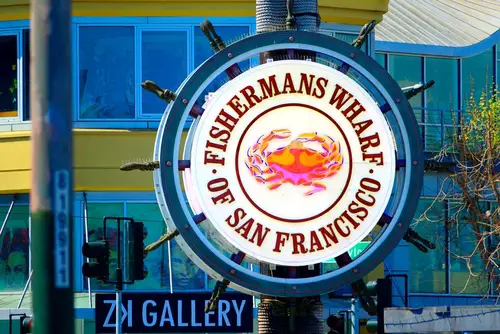
In photos, Fisherman’s Wharf looks like a charming waterfront full of sea lions, seafood, and old-timey charm. In person, it’s crowded, overpriced, and full of chain stores pretending to be “local.” The smell of fried food and salt water mixes with exhaust from tour buses. It’s less “authentic San Francisco” and more “tourist Disneyland.”
There are a few bright spots — the sea lions at Pier 39 really are delightful — but the magic fades quickly. Locals rarely go there unless they’re playing tour guide. It’s loud, commercial, and hard to navigate when it’s packed. A quick visit is fine, but the real SF culture is elsewhere.
2. Times Square – New York City, New York

Times Square photographs like a neon dream — the heart of the city that never sleeps, buzzing with energy. But when you’re actually standing there, it’s mostly shoulder-to-shoulder crowds, blaring advertisements, and costumed characters aggressively asking for tips. It’s easy to feel trapped in a tourist trap surrounded by overpriced chain restaurants and souvenir shops. Locals famously avoid it unless they absolutely have to pass through.
The lights are dazzling for a few minutes, but sensory overload kicks in fast. The noise, the smells, and the sheer chaos make it less “movie moment” and more “how do I get out of here?” Even grabbing a quick photo means dodging other tourists doing the same thing. For most, one visit is enough to say, “I’ve seen it,” and never go back.
3. The Alamo – San Antonio, Texas
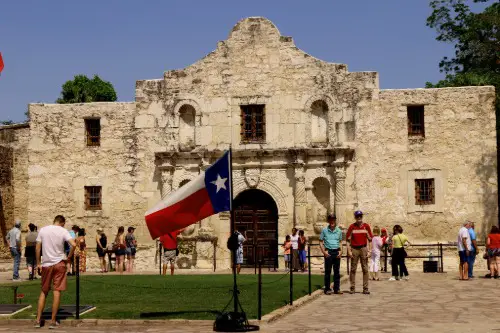
Photos of the Alamo suggest a massive, fortress-like landmark loaded with Texas history. In reality, it’s surprisingly small — and it sits right in the middle of downtown San Antonio, surrounded by hotels, shops, and even a Ripley’s Believe It or Not. The contrast between the solemn historic site and the touristy chaos around it can feel jarring. It’s more of a quick stop than an afternoon-long experience.
Inside, there’s not much to explore — a few rooms, a small courtyard, and some displays about the battle. Most visitors are surprised at how fast they’re done. The reverence of the history can get lost among the selfie sticks and T-shirt stands outside. It’s worth seeing, but don’t expect the sweeping battlefield vibe from textbooks.
4. Mount Rushmore – Keystone, South Dakota

Mount Rushmore looks majestic in photos — those four faces carved into granite against a bright blue sky. But when you get there, you realize it’s smaller than you expect and kind of distant from the viewing area. You can’t get anywhere near the actual carvings, and the surrounding area feels overly commercialized. There’s even a parking complex and gift shops galore right by it.
The monument’s historical controversies also hang heavy in person. It sits on land sacred to the Lakota Sioux, which adds a complicated layer to what’s often marketed as pure patriotism. The surrounding Black Hills are beautiful, though, and often end up being the real highlight. Most visitors snap a few photos, buy a magnet, and move on.
5. Plymouth Rock – Plymouth, Massachusetts
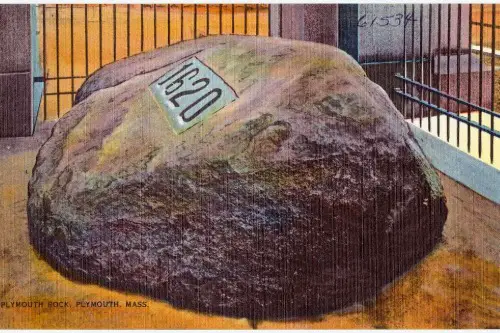
Plymouth Rock is legendary — the supposed landing site of the Mayflower Pilgrims. You expect something grand, but what you get is a small, rather plain boulder sitting under a protective portico. It’s carved with the date “1620,” but historians aren’t even sure if it’s the actual rock the Pilgrims stepped on. The presentation feels oddly anticlimactic after centuries of myth.
The site is right downtown, surrounded by a fence and perched over a sandy pit, so you can’t even touch it. Many tourists literally laugh when they first see it because it’s so underwhelming. It’s more about the symbolism than the spectacle. Still, the waterfront area around it is charming, and that helps balance the letdown.
6. The Gateway Arch – St. Louis, Missouri
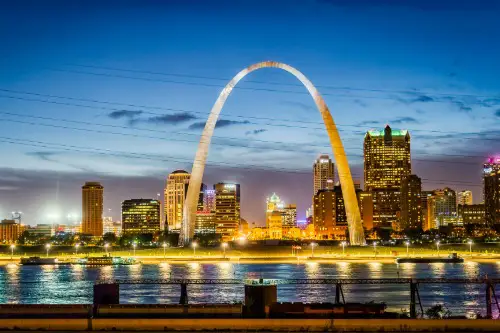
In photos, the Gateway Arch looks sleek, futuristic, and impossibly tall — which it is. But once you get there, you realize it’s surrounded by a lot of concrete, and the Mississippi River nearby isn’t exactly scenic. The tram ride to the top is fascinating but also cramped, with tiny pods that can make anyone slightly claustrophobic. When you finally get to the top, the view is decent but not breathtaking.
The city below can look industrial and gray, especially on cloudy days. Inside, the museum is interesting, but it doesn’t take long to explore. The Arch itself is more about saying you’ve done it than lingering to soak it all in. Still, its engineering is undeniably impressive — just not quite as romantic as it looks on postcards.
7. The Las Vegas Strip – Las Vegas, Nevada
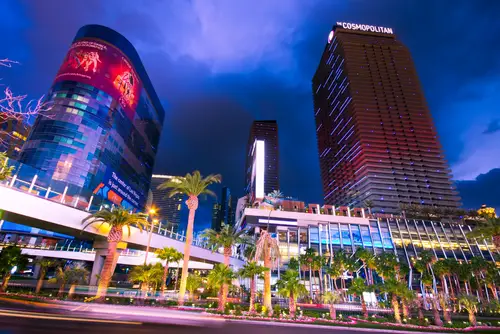
At night, the Strip photographs like pure magic — glowing lights, glitzy hotels, and endless entertainment. But walking it in real life can be exhausting, with blaring noise, aggressive street performers, and the constant smell of cigarette smoke. Daytime reveals just how rough the edges are, with heat shimmering off the pavement and people stumbling out of casinos. It’s part spectacle, part sensory assault.
Even the fancy hotels lose their shine up close. The air smells like a mix of perfume and desperation, and you’ll quickly tire of dodging promoters pushing club passes. It’s still an incredible experience once or twice, but definitely not as glamorous as Instagram suggests. You’ll need good shoes — and probably a strong coffee — to survive it.
8. Niagara Falls (U.S. Side) – Niagara Falls, New York
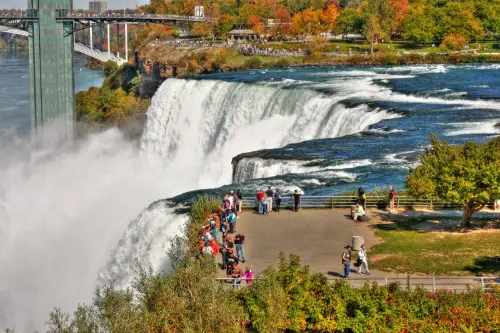
Photos of Niagara Falls make it look like a wonder of the world — and it is, from the Canadian side. But on the U.S. side, you mostly get partial views and fences blocking the best angles. The surrounding city of Niagara Falls, New York, feels a bit rundown compared to its vibrant Canadian counterpart. Many visitors are surprised at how stark the difference is.
There are still some beautiful trails and overlooks, but the wow factor is noticeably reduced. Most people who visit end up crossing the border to get the full panoramic view. The American side has more of a state park feel — quieter but less dramatic. It’s one of those places where geography really matters for the experience.
9. Four Corners Monument – Arizona, New Mexico, Utah, Colorado
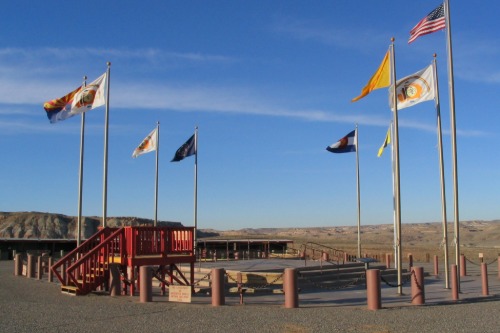
Standing in four states at once sounds amazing — the ultimate road trip photo op. But when you arrive, it’s basically a concrete slab with state lines drawn on it, surrounded by vendor stalls. The area around it is barren desert, and there’s not much else to do nearby. Lines can get long for people waiting to pose in all four states at once.
You might spend an hour driving there and only fifteen minutes at the monument. The setup feels more like a novelty stop than a must-see attraction. Still, it’s quirky and fun if you know what to expect. The Navajo artisans selling crafts nearby often end up being the most memorable part of the visit.
10. The Hollywood Sign – Los Angeles, California
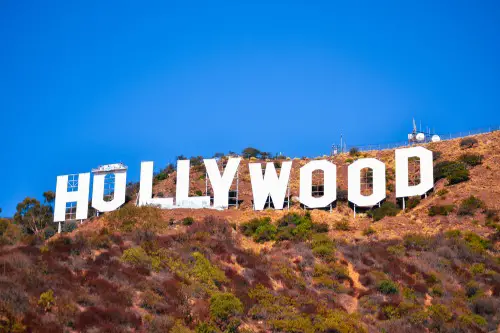
In photos, the Hollywood Sign gleams like a beacon of fame and old-school glamour perched high above Los Angeles. But when you see it up close, you realize it’s actually fenced off and closely guarded — you can’t even walk right up to it anymore. The area around it is dusty, littered with “No Trespassing” signs, and crawling with security cameras. Locals often get irritated with tourists clogging up narrow neighborhood streets just trying to snap a closer shot.
Even the hike to get near it isn’t exactly cinematic. The trails can be hot, crowded, and less than glamorous, with the constant hum of helicopters overhead. Most people end up viewing the sign from Griffith Observatory or Beachwood Canyon instead. It’s still iconic — just a lot less magical when you realize how far away you have to stay.
11. Liberty Bell – Philadelphia, Pennsylvania
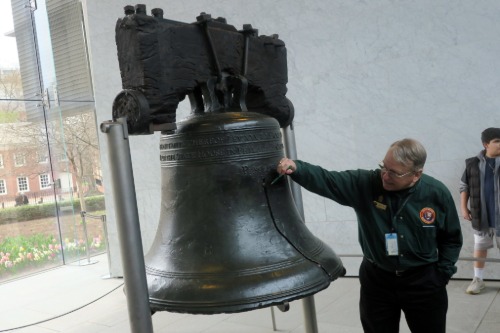
The Liberty Bell is one of America’s most treasured symbols, and its photos make it seem huge and powerful. But in person, it’s smaller than expected and enclosed behind glass inside a modern museum. You can’t touch it, and there’s often a long line just to get a glimpse. The building’s security process also adds a bit of a hassle.
The famous crack is there, but the bell’s display feels more sterile than stirring. Still, the historical exhibits nearby do a good job of putting its story in context. It’s a quick stop rather than a half-day attraction. For many, seeing it once is more about checking a box than having a life-changing moment.
12. Cloud Gate (“The Bean”) – Chicago, Illinois
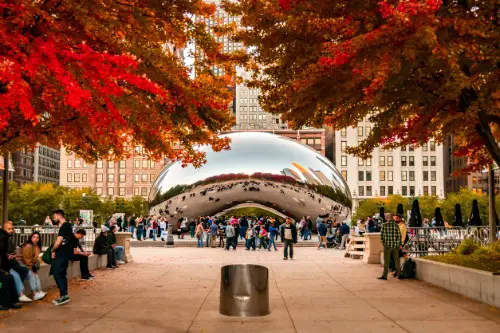
The Bean is one of the most photogenic landmarks in the U.S., reflecting the Chicago skyline in its gleaming curves. But when you’re there, it’s usually swarmed with people, making it nearly impossible to get a clean photo. Everyone’s jostling for a selfie spot, and security guards keep people from touching it too much. The mirrored surface is also full of smudges from countless hands.
It’s undeniably cool to see up close, but the crowds can kill the vibe fast. Early morning visits are best, but most tourists go midday when Millennium Park is packed. Depending on the weather, the metal can be freezing or scorching hot. Still, even if it’s chaotic, it’s hard to resist taking at least one reflective selfie.
13. Washington Monument – Washington, D.C.
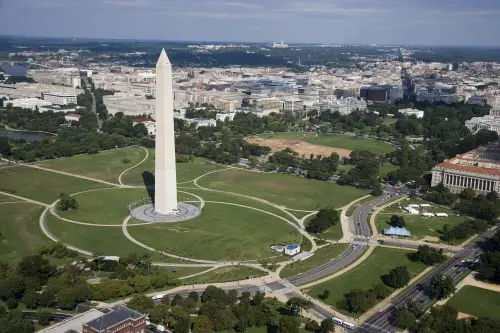
From afar, the Washington Monument looks stately and serene, standing proudly over the National Mall. But up close, it’s basically a big obelisk surrounded by crowds and long security lines. The elevator ride to the top is brief, and the viewing windows are small and often foggy. The surrounding area can feel more like a construction zone than a peaceful park.
Still, the view over the Reflecting Pool and Capitol is impressive if you catch it on a clear day. The monument’s simple design also means there’s not much to “see” beyond the symbolism. You’ll likely spend more time queuing than exploring. It’s powerful, but not exactly thrilling in person.
14. South of the Border – Dillon, South Carolina
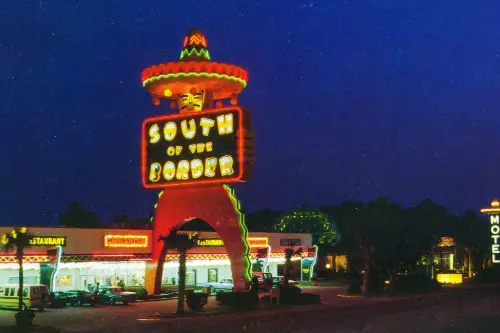
From the highway, South of the Border looks like a kitschy paradise — neon signs, a giant sombrero tower, and promises of fun right at the North Carolina–South Carolina border. In reality, it’s a half-abandoned roadside attraction with faded paint and empty shops. The once-bustling theme park vibe now feels like a relic of the 1970s. Many travelers stop mostly out of curiosity.
There’s a strange charm in its outdatedness, but it’s undeniably eerie at times. The gift shops sell random trinkets, and the restaurants are hit or miss. Kids might love the novelty, but adults usually leave shaking their heads. It’s one of those places that’s more fun to talk about than to actually visit.
This post 14 American Landmarks That Look Perfect in Photos — Until You See Them was first published on American Charm.


